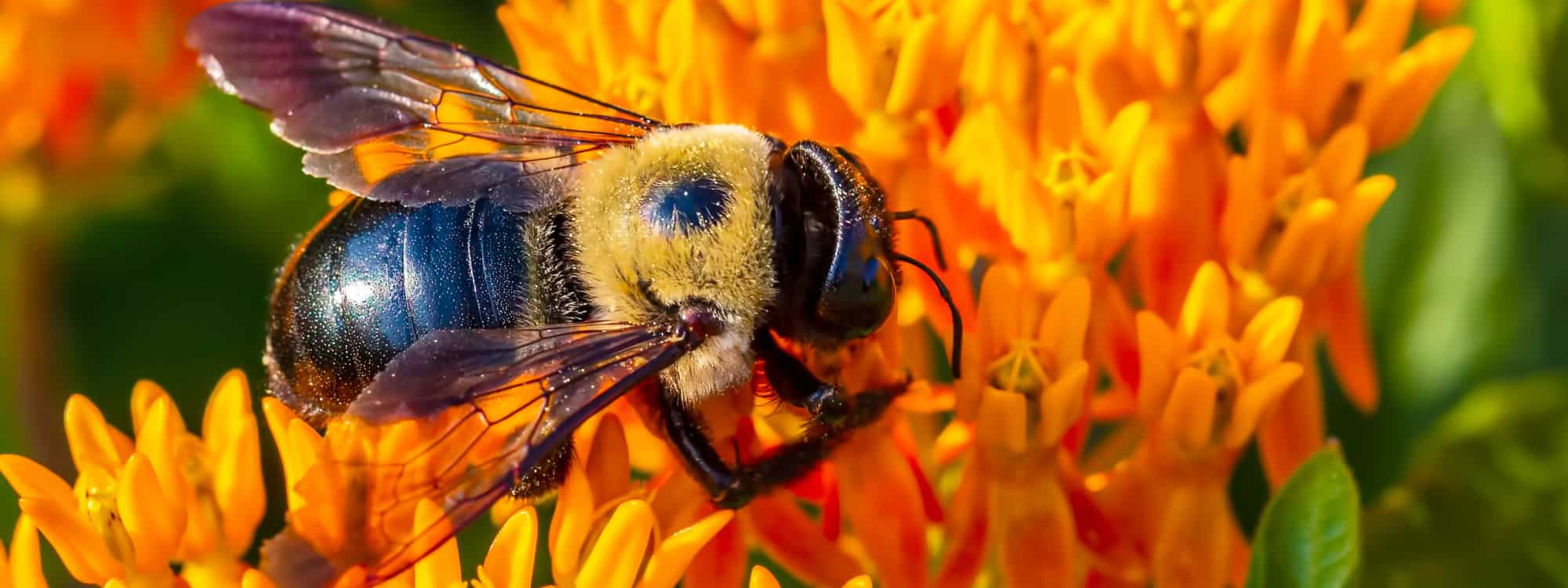Carpenter Bees
Identification:
Carpenter bees, commonly found in Muskoka, are large, solitary bees that resemble bumblebees, typically measuring between 12 to 25 mm in length. They have a shiny, smooth black abdomen, which distinguishes them from the fuzzier bumblebees. Carpenter bees are often seen hovering around wooden structures, such as fences, decks, and eaves, where they bore holes to create nesting sites. While they can look intimidating due to their size, carpenter bees are generally non-aggressive and rarely sting unless provoked.
Habitat:
In Muskoka, carpenter bees prefer to nest in untreated or weathered wood, often burrowing into the wood to create tunnels for laying eggs. They are commonly found around decks, wooden fences, and the trim of houses, as well as in trees and wooden structures like sheds and barns. Carpenter bees are solitary creatures, with each female constructing her own nest, which can lead to multiple nests in the same area. While they are not social like honeybees, carpenter bees are known to be territorial and may return to the same nesting sites each year.
Diet:
Carpenter bees primarily feed on nectar from flowers, much like other bee species. They are efficient pollinators, visiting a variety of flowers to collect nectar, which they use for energy. While they don’t consume pollen as frequently as honeybees, carpenter bees still contribute to pollination, particularly for plants with open, accessible blooms. Their diet of nectar helps support local ecosystems by facilitating the growth and reproduction of flowering plants.
Behavior:
Carpenter bees are solitary, with each female constructing and defending her own nest, while males serve primarily to mate with the queen. They are not aggressive but can display territorial behavior, especially the males, which often hover near their nesting sites and act defensively. Unlike wasps, carpenter bees do not form large colonies, and their nests are typically built in burrows within wood. While they can damage wood over time by repeatedly drilling holes for nesting, they are generally not a threat to humans, as they rarely sting unless handled roughly.
Prevention:
To prevent carpenter bee infestations, it is important to maintain and seal wooden structures. Repainting or staining wood can help deter carpenter bees, as they prefer to burrow into untreated, weathered wood. Filling any holes or cracks in wooden surfaces can prevent new bees from creating nests. Additionally, regular inspections of wooden areas around your home can help spot early signs of nesting activity, allowing for timely intervention. Keeping flowers and plants away from the area near nesting sites can also help reduce bee activity in the vicinity.
Control:
Managing carpenter bees requires patience and precision. If a colony is established, it’s best to either fill in the holes where they’ve nested or apply insecticidal dust specifically designed for bees. However, it is important to avoid harmful pesticides that could impact local pollinators. For larger infestations, professional pest control services or beekeepers may be able to safely relocate the bees or remove the nests. Taking preventive measures such as repainting wood and sealing holes can greatly reduce the likelihood of carpenter bee damage in the future.

